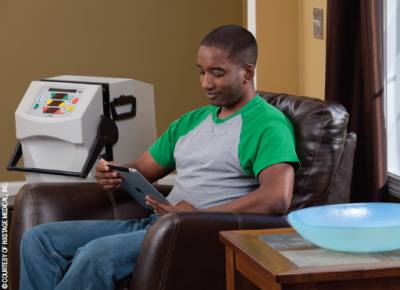This ESRD facility monthly newsletter highlights the latest ESRD insights and resources. Our goal is to provide you with a resource that makes it easy for you to stay on top of trends and support you in providing the best possible care for those you work with and serve.
In This Issue:
May Matters

- May is National Nurses Month and we cannot let the opportunity to celebrate you pass without letting you know how grateful we are for each of you. This 2022 National Nurses Week Tribute Video, Gratitude for Your Grace Under Pressure is for you. Thank you from the bottom of our hearts!
- As of April 30, year one of our five-year contract with CMS is complete. As we move into year two, our focus areas will be unchanged, but goals prescribed by CMS are steeper. As such, we will be changing our approach this year, working with small groups of facilities for short, four-month plan-do-study-act (PDSA) cycles of improvement, providing tools and resources based on facility-identified barriers. Beginning with the end in sight, our goal is to quickly boost improvement efforts and share successful strategies that can continue after the four-month cycles end. Because our PDSA groups are small, we want to make sure that ALL of you can easily access tools and resources on our re-designed websites. Click here to view a short video on how to navigate our new websites. You may also find additional helpful resources when browsing by topic, especially in the National COVID-19 Resiliency Network (NCRN), Health Equity, Give the Boost a Shot, Infection Control, Shop Talks and Vaccination sections.
- In addition to the resource for depression below, we are excited to share with you the newly developed Alliant De-Escalation Toolkit, created in partnership with the National COVID-19 Resiliency Network (NCRN). It is our hope that this toolkit will assist staff members so they are better equipped to handle challenging situations they may encounter. Click here to access the resource.
Depression

May is mental health awareness month. Mental health is a significant determinant of outcomes for a dialysis patient. It is important that all dialysis staff have a basic understanding of what signs to look for in a patient and to know when to alert the social worker (SW) or nephrologist when behaviors are changing.
The first few weeks of treatment for a patient are critical for the SW to make a connection with a new patient and open the lines of communication. It is the time to assess risk factors in the patient’s life that would affect chances of success. It is also the time to assess the strengths in the patient that can be leveraged to work through the transition into dialysis.
Getting to know the patient and building a trusting relationship are key to being able to accurately assess for signs of depression or cognitive decline. “Questions to Get Started” is a simple tool that the patient can be led to complete to start that life conversation and develop a trusting relationship.
Click here to access this resource.
CMS Goals:
- Increase the number of patients accurately screened and treated by a mental health professional for depression.
- Ensure that facilities report depression screening in EQRS.
Network 8 Contact: ericka.webb@allianthealth.org
Network 14 Contact: ednesha.smith@allianthealth.org
Home Dialysis

It is important to keep patients educated about their options when it comes to home dialysis. Staff need to be fully educated on the different home modality options to combat any myths, fears, or barriers patients may have. Share AREP’s Home Dialysis Options video with your staff to help ensure they have all the information they need to truly help educate your patients about home dialysis.
CMS Goals
- Increase prevalent patients added to a home modality.
- Increase incident patients added to a home modality.
- Increase the use of Telemedicine for home modality in rural areas.
Resource: AREP’s Home Dialysis Options
Home Dialysis Contact: maryam.alabood@allianthealth.org
Hospital Admissions, Readmissions, and Emergency Visits

Hospitalizations are an all-too-common occurrence for dialysis patients. Patients often end up in the ER and unplanned hospitalizations are more common than planned admissions. As providers, the goal is to help patients understand their disease process so that they can make healthier choices. One way to do this is by taking a few minutes to sit with patients and discuss how to avoid hospitalizations and the importance of communicating with the care team when a visit to the hospital occurs. The questionnaire included below can be a useful tool to help patients and staff better understand recent hospitalizations and potentially prevent recurrences.
CMS Goals
- Decrease the national rate of hospital readmissions.
- Decrease hospital 30-day unplanned readmissions.
- Decrease the national outpatient emergency department visits.
Hospitalization Contact: dany.anchia@allianthealth.org
Transplant

For many patients, transplant is the best option. Important advantages include feeling well and having more energy. Most patients can return to their pre-dialysis activities of daily living. It is important to ensure patients are educated on transplant and how it can improve their quality of life. Share Explore Transplant’s “Why Get a Transplant” with your staff and patients to learn more about why transplant is the preferred treatment option.
CMS Goals:
- Increase patients added to the transplant waitlist.
- Increase the number of patients receiving a kidney transplant.
Resource: Why Get a Transplant
Transplant Contact: arlandra.taylor@allianthealth.org
Vaccinations

Vaccinations will continue to be a focus during the next contract year. Dialysis patients who are not up to date on routine recommended vaccines should receive priority with education and needed vaccines. Please ensure your vaccination records are up to date and share the resource below with patients in your facility.
CMS Goals:
- Achieve patient COVID-19 vaccination rate of 80%.
- Achieve patient influenza vaccination rate of 90%; achieve 90% of staff influenza vaccination.
- Achieve patient pneumococcal conjugate 13 (PCV, Prevnar 13) vaccination rate of 56%.
- Achieve patient pneumococcal polysaccharide (PPSV, Pneumovax 23) vaccination rate of 87%. achieve PPSV vaccination rate of 80% of patients over age 65.
- Achieve patient PPSV booster vaccination rate of 43%.
Resource: Kidney Patients Need Certain Vaccines
Vaccinations Contact: kristi.durham@allianthealth.org